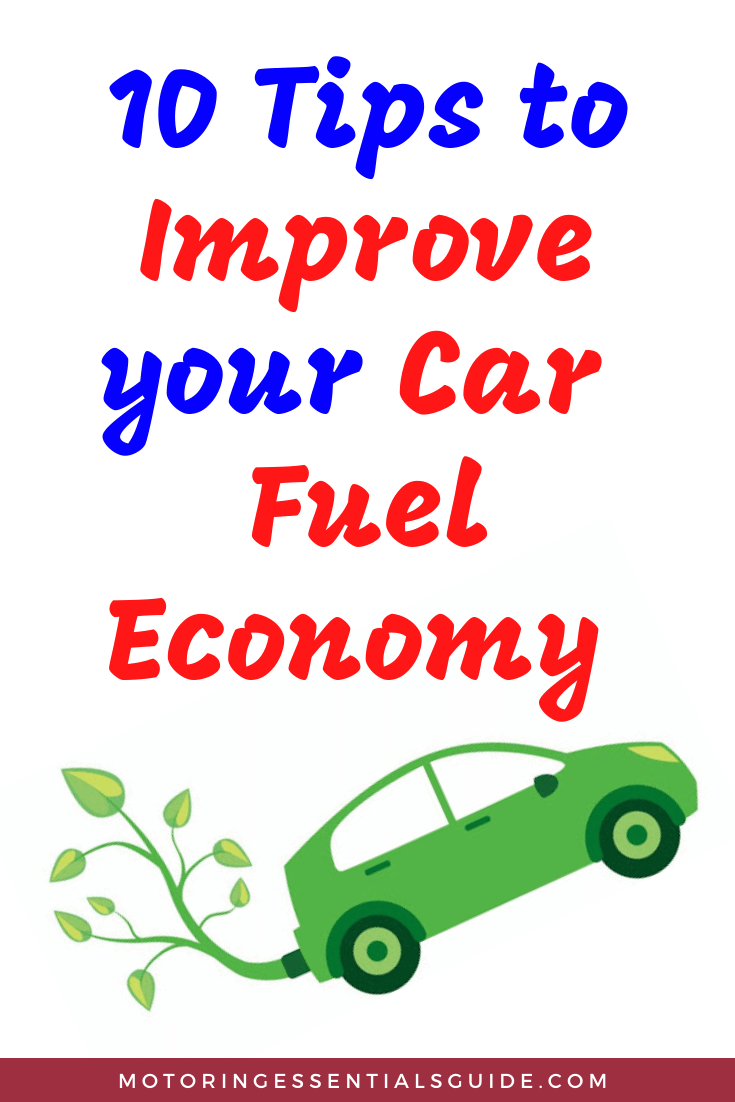Cumulatively, the bucks you save by maximizing your gas mileage can leave money in your pocket enough for other uses.
Below we discuss some tips to help you get better gas mileage from your vehicle.
And as you’ll learn, some of these tips are super straightforward.
10 Tips on How to Improve Car Fuel Efficiency
1. Maintain the manufacturer’s suggested tire pressure
Depending on factors such as the terrain, the weight of vehicle or the season, different tires have different pressure recommendations. Off road tires for daily driving need to have a pressure higher than on-road tires or even SUV tires. According to experts, keeping your auto tires properly inflated can reduce their wear and tear and it also improves your car’s gas economy by as much as 3%.
Your vehicle’s owner’s manual should have tire pressure recommendations. You can also find this information on the glove box or the door’s jamb (driver’s side).
2. Ensure that your car’s engine is perfectly tuned
A car whose engine is out of tune burns fuel inefficiently because it suffers reduced engine power.
Engine tune ups cover a range of procedures starting with the basics like oil change (use recommended oil brands), cleaning of the filter, and the replacement of items such as spark plugs.
Have a good mechanic fix them all and better your fuel economy by about 4%.
3. Ensure precise wheel alignment
Misaligned parts can as well create extra drivetrain drag further diminishing your MPG (miles-per-gallon).
Present your car to your favorite service center for an alignment check.
4. Take advantage of cruise control
Forget the criticism- cruise control systems have bucketloads of benefits if used appropriately chief among them significant fuel savings (they eliminate sudden throttle movements).
According to Natural Resources Canada, cruise control can save up to 20% gas, although the amount saved depends on the driver and the type of vehicle.
5. Practice good driving skills
Your adherence to recommended driving habits will pay you back at the pump.
Avoid costly behaviors like sudden braking since your car will downshift to lower gears (which demand more fuel) to regain momentum.
Sudden accelerations are not good either – tests have shown engines to be more efficient at moderate revolutions per minute (RPMs).
Besides:
- Avoid excessive idling- the more your vehicle is in idling mode, the worse your MPG (start by keeping off rush hour traffic and turning off the engine whenever possible).
- Resist the urge to over speed- exceeding your car’s ‘sweet speed’ creates more aerodynamic drag harming your gas mileage.
- Activate overdrive mode- ensure that overdrive is on when at a higher speed. It will save your gas mileage noticeably since the engine engages an optimized transmission gear.
- Follow from a safe distance- you won’t need to brake abruptly (see above about how this affects your car’s fuel economy).
Other Smart Tactics
6. Merge your trips
Another obvious tactic is running as many errands as you can in one trip.
It keeps your vehicle warm (you aren’t starting/stopping it frequently) bringing more fuel savings in colder zones.
7. Observe load limits
This you also know- overloading the vehicle hurts fuel usage and it’s important to stick to the stated loading limits.
8. Be calculative
Planning can also yield hefty fuel savings.
You can, for example, follow shorter routes and drive on paved roads whenever you can- rough terrain produces more resistance and you will, in turn, use more gas.
9. Seal common loopholes
You may also be wasting gas by overlooking some essential routines.
Primarily, it’s vital to implement the following:
- Inspect the gas cap seal- this can become worn out over time creating an opening for air to find its way into the gas tank. The excessive air will make your car to again burn more gas.
- Purchase the best-quality gas- Using an incorrect gasoline type may decrease the engine’s performance and mess the standard MPG.
- Avoid warming up excessively long– Auto gurus suggest that your car should be ready within 30 seconds of warming up. Longer than this means more fuel wastage.
10. Master your RPM
Perhaps, an easier way to control your gas consumption is to monitor your car’s RPMs and identify the range at which you attain the maximum fuel savings.
You will henceforth drive within this range.
Final words
As you have seen, improving your car’s fuel economy is no rocket science and simplistic measures such as maintaining optimal tire pressure and proper driving habits can go a long way.
Also useful are smart strategies like combining your trips and carrying lighter loads.
Finally, take your car for alignment and tune ups regularly while trying to discover (and staying within) your vehicle’s most economical RPMs range.
Your wallet will thank you.

1 thought on “10 Tips to Improve Your Car Fuel Economy”